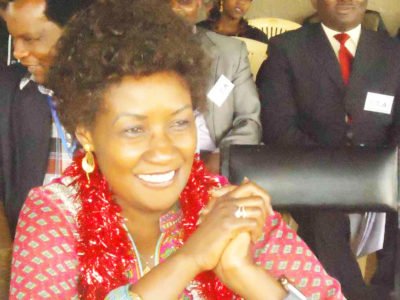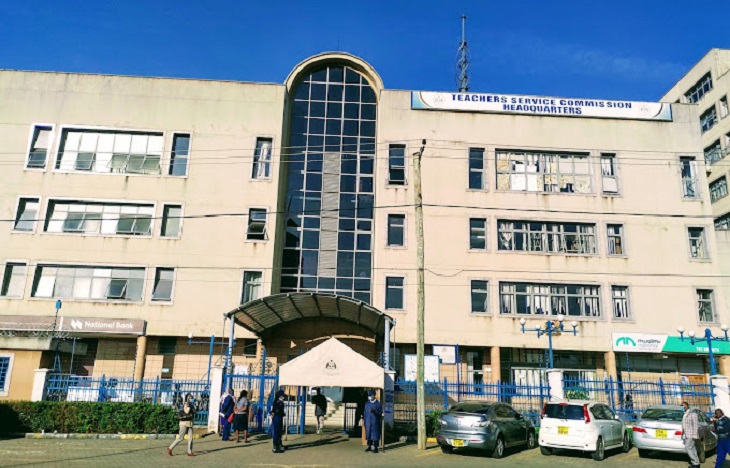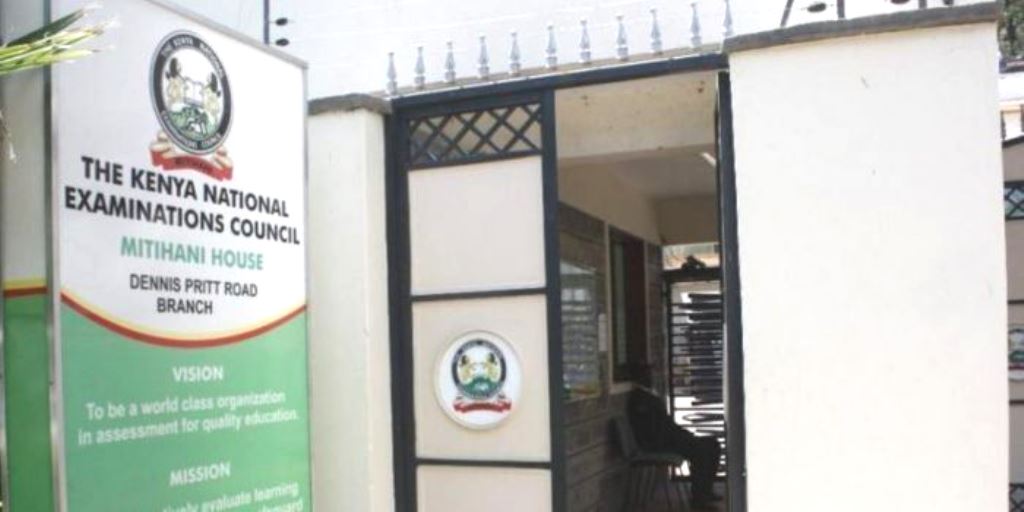By Staff Reporter
The Salaries and Remuneration Commission’s (SRC) move to address pay disparities in the Collective Bargaining Agreement (CBA) for teachers, which ends in June 2021, will be welcome news for teachers.
SRC has committed to address the huge disparities in the pay structure for teachers, which sets the basis of negotiations of the next CBA and the position of the government.
In the newly released draft Remuneration Guidelines for Public Sector by SRC dated November 2020 and which are subject to public participation, thousands of teachers stand to get a pay rise as the pay differentials among teachers are implemented.
SRC says that it will enter into negotiations with employers and trade unions with a view of reducing pay gaps among workers within the same Job Group and those performing similar duties.
According to SRC, there are serious differences in pay even for people falling within the same pay scale, among them teachers, which it notes to be 186.8 per cent being the higher wage difference at higher job groups within the teaching service.
“Salaries of Public sector workers shall reflect the relative value of their jobs and the salary ranges within and between grades should not be wide. A ratio of at most 1.5 times between the grade minimum and grade maximum salary points is desired,” note SRC in the guidelines.
For instance, under the current CBA for teachers, the pay difference between the highest and the lowest Chief Principal at Job Group D5 T scale is a huge Sh26, 276 per month, with the highest paid Chief Principal currently earning Sh157, 656 while the lowest Chief Principal in the same scale earns Sh131,380 which is a disparity of Sh26,276. This despite the fact that these cadres of teachers perform the same duties.
Another group of teachers who are disadvantaged are those at Job Group C3 who include Secondary Teacher I whose pay indicates a disparity of Sh10,789. The highest paid teacher in this group earns Sh53,943 while the lowest takes home Sh43,154 which explain this drastic gap.
Another issue that SRC would address in the job disparities is the controversial stagnation of over 22,000 teachers holding Diplomas (Job Group L and M) who have remained in the same Job Group for between 8-19 years.
The Kenya Union for Post Primary Education Teachers (KUPPET) has since petitioned the TSC to address the issue of this cadre of teachers whose plight seems to have escaped the notice of the parties during negotiations for the 2017/2021 CBA.
SRC admits that unjustified pay differentials lead to low morale and productivity, precipitating the clamour for salary increases and unnecessary labour unrests in the public service.
“Disparities in pay for workers with similar qualifications, skills and in comparable occupations counter to the principal of equal pay for work of equal value,” states SRC in the advisory.
But in what is a blow to the teaching fraternity in the wake of the slated negotiations for new CBA to cover the 2021-2025 period, SRC rules out the possibility of teachers getting enhanced allowances. The pay regulator is categorical that it will give priority to basic.
“The Employment and Labour Relations Court, public sector employers, workers and trade unions while maintaing the desired balance will discourage any reviews that favour allowances over basic pay,” states SRC in the guidelines.
Teachers earn house, hardship and special allowances currently and given the position taken by SRC, the educators would likely miss on any pay increment on this front. In the current CBA, SRC approved an increment on the basic pay spread over a period of four years, and it did not consider increment on allowances.
The current CBA for teachers ends in June 2021 and the unions and TSC are expected to start negotiations for a new CBA covering 2021-2025. Already KNUT, KUPPET and TSC have planned discussions.
In another shocking development, SRC says any future salary increment in the public service, including the teaching, will be pegged on the state of the country’s economy.
“Ability of the economy to sustain increased labour cost shall be considered in determining the level and timing of any awards on remuneration,” state SRC.
SRC further observes that trade unions and employers negotiated CBA resulted in an average labour cost increase of 19 per cent, which was far above the annual growth rate in labour productivity.
The Commission notes that this trend constitutes a broken link between labour productivity and pay, contrary to article 230 (5) of the Constitution. The clause requires that productivity and performance be considered in determining remuneration and benefits in the public sector.
The government spent a whopping Sh52 billion to cover the teachers’ current CBA.
Currently, the economy is struggling majorly due to the effects of Covid-19. The National Treasury CS Ukur Yatani has asked Kenyans to brace for tight cost cutting measures. The CS has even warned civil servants of looming pay cuts.
The commission has also introduced what it calls performance-linked pay, which implies that any salary improvement will be considered on the basis of employee performance.
The new SRC guidelines are coming at a time when TSC had given a strong hint that any future negotiations on remuneration of teachers will be pegged on a number of factors.
During a meeting with KUPPET top officials in Naivasha in November 2019, the Commission CEO Nancy Macharia said the parties agreed on the factors to be put in place to negotiate a new CBA.
“The factors shall include affordability, sustainability, comparability, government fiscal policies and guidelines and teacher performance and productivity,” she said.
TSC, in consultation with SRC, conducted Job Evaluation for the teaching service in 2015/2016 and based on its findings, SRC made recommendations on a new grading structure and remuneration of teachers which have since been progressively implemented.
The evaluation also set the parameters to be used to determine new teacher salaries that include a teacher’s job content, related duties and minimum qualifications needed to perform the job.
Others include the decision making level of each job, requisite accountability, impact of the job, problem solving as an integral aspect of the job and job knowledge.
A teacher’s managerial skills, interpersonal skills needed to perform the job, working conditions, responsibility, and independent judgment of the job holder were also other key considerations.
KUPPET led by its Secretary General Akelo Misori proposes a 70 per cent basic salary rise for teachers, notably the lowest paid in the proposed 2021-2025 CBA.
The lowest paid teacher in grade C2 currently earning Sh34,955 will earn Sh59,425 per month if the proposals are implemented.
The additional Sh24, 470 per month for teachers in this grade will represent a 70 per cent salary rise.
The highest paid teacher in C2, it offers will see the salary rise from the current Sh43,694 to Sh74,280 per month if the proposals are implemented, where the additional Sh30,586, represents a 70 per cent salary rise.
While the salary disparity between the highest and lowest teachers in C2 is currently Sh8,739 per month, this is expected to rise to Sh14,855 if the proposals are implemented, in their current form.
One of the key highlights of the current CBA is closing down on the salary disparities between the highest paid teachers, notably administrators.
KUPPET also wants the highest paid Principal at D4, currently earning a minimum monthly basic salary of Sh118, 242 to take home Sh153,715.
The extra Sh35,473 represents a 30 per cent increase, which is the lowest proposed salary increase for teachers by KUPPET.
In the proposal, the union wants the highest paid Principal in D4 earn Sh184,458 per month compared to the current Sh141,991 per month.
The additional Sh42, 467, representing a 30 per cent increase, will see the disparity between the highest Principal in D4 increase from the current Sh23,749 to Sh30,743 per month.
KUPPET seeks commuter allowance of between Sh8,500 to Sh20,000 per month.
On leave allowance, the union wants this increased to Sh43,634 to Sh141,891. This is an improvement from the current Sh6,000 and Sh10,000 tutors currently get.
It is also seeking a hardship allowance of between Sh16,350 to Sh57,150 and a town allowance for Nairobi and county headquarters of between Sh4,000 and Sh8,000.
Kenya National Union of Teachers, despite the Commission’s latest fight to reject the Recognition Agreement signed about 51 years ago has made its proposals.
KNUT wants the highest paid Chief Principal, who currently earns a minimum of Sh131,380 per month to earn Sh289,036 with effect from July 1st 2021.
The additional Sh157,656, representing a 120 per cent rise will shoot to Sh394,140 from July 1st 2022, representing a 36 per cent annual rise.
The once giant union also proposes that the lowest paid teacher in B5 increase from Sh21,756 per month to Sh65,268, an additional of Sh43,512 per mo nth, a percentage increase of 200.







Good work,pravo.
Good improvement to the Kenyan teachers through the SRC and the TSC if everything negotiated deal goes through.